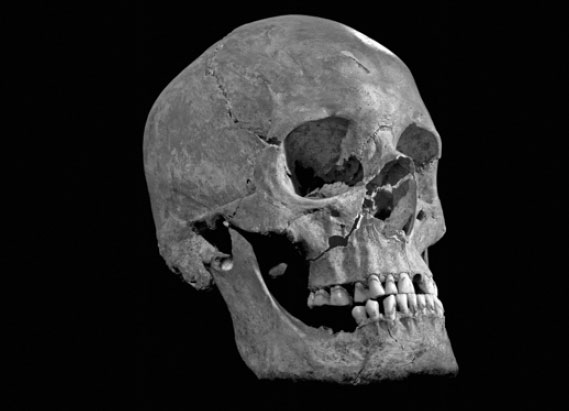Bones suggest Richard III met swift death
Scientists in Britain have given blow-by-blow details of King Richard III's death at the Battle of Bosworth more than 500 years ago, saying two of many blows to his bare head could have killed him very quickly.
Their analysis of the remains of the last English monarch to die in battle suggest he could have been attacked by more than one person, and that nine of 11 blows, which were clearly inflicted in battle, were to his skull.
Another possibly fatal wound was made by a weapon thrust into his pelvis. The findings also support previous opinions that he was not wearing a helmet.
The head injuries are consistent with some near-contemporary accounts of the battle, the researchers said in findings published in The Lancet medical journal on Wednesday.
"The wounds to the skull suggest that he was not wearing a helmet, and the absence of defensive wounds on his arms and hands indicate that he was otherwise still armored at the time of his death," said Sarah Hainsworth, a professor of materials engineering at Leicester University, who co-led the study.
Richard's remains were found by archaeologists under a municipal car park in Leicester in 2012 and subsequently identified by experts from the city's university.
A court ruled in May this year that the king should be reburied near to where he was slain in battle, dashing the hopes of descendants who had wanted his remains to be taken back to his northern English stronghold of York.
According to historical records, the monarch was killed in battle on Bosworth Field, near Leicester, on Aug 22, 1485. The accounts suggest that Richard was forced to abandon his horse after it became stuck in a mire and that he was then killed in hand-to-hand fighting.
His death was the culmination of the Wars of the Roses, a series of engagements in a bloody 30-year power struggle between Richard's House of York and the rival House of Lancaster.
|
The full skull of the skeleton of King Richard III found at the Grey Friars Church excavation site in Leicester. He likely perished at the hands of assailants in hand-to-hand combat after he was forced to abandon his horse at the Battle of Bosworth on Aug 22, 1485. University of Leicester / Ho / Agence France-Presse |
(China Daily 09/18/2014 page11)















